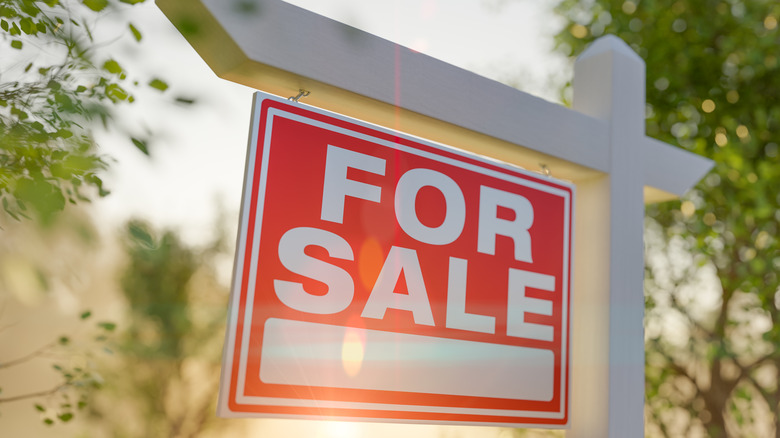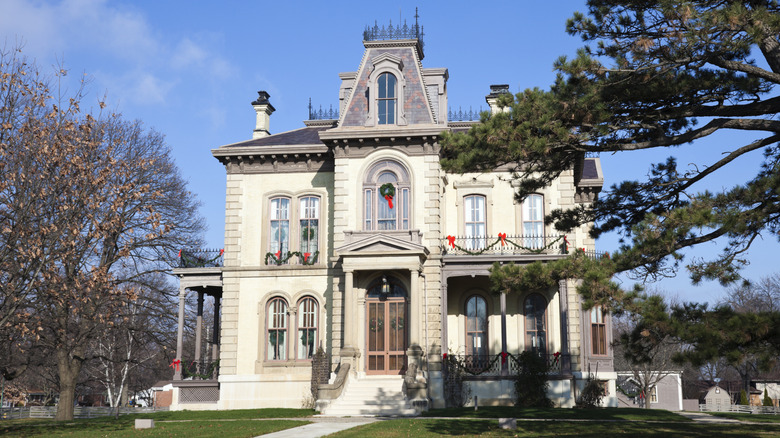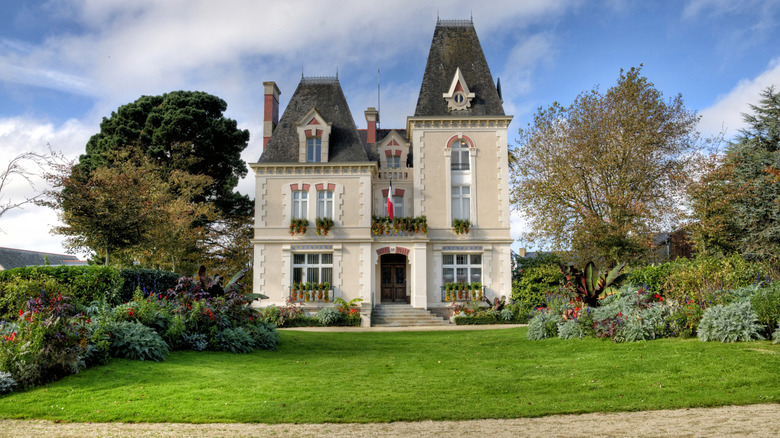Your Style Of Home Could Literally Be Scaring Away Buyers
Second Empire homes are undeniably dramatic. With mansard roofs and imposing facades, these houses command attention. You likely appreciate their historic architectural details if you're a lucky owner. The fact is, that same gothic flair and brooding presence you love might be scaring away buyers. Whether it's the ornate details or the mysterious dormer windows, Second Empire homes are stunning structures that have been slapped with the haunted house stereotype. But you can turn the outside into the warmest, most inviting house on the block with a few changes that won't take anything away from its history.
Second Empire houses were at the peak of popularity in the mid to late 1800s. Public buildings were styled in the aesthetic, including the stately five-story Mitchell Building and West Virginia University's Woodburn Hall. The facades were inspired by French architecture and defined by their steep mansard roofs and dormer windows that created an extra floor of usable space. But like shag carpet and popcorn ceilings, the Second Empire era had an expiration date, and by the 1880s, the style was traded for more wholesome architecture. Enter Hollywood. Movies and TV shows typecast the Second Empire aesthetic into the classic haunted house, which has stuck ever since.
With some modern paint choices, lush landscaping, and excellent lighting, you can shift the mood of your Second Empire home from gothic to grand. Because if yours lacks some of these small touches, your home isn't haunted — it just looks that way.
Why Second Empire houses give off a scary vibe
Maybe it was the 1960s movie "Psycho" that started the whole thing when it made a Second Empire house the backdrop for the mayhem that ensued, leaving us with the heebie-jeebies. Even the beloved holiday movie "It's a Wonderful Life" had creepy scenes of a rundown, abandoned Second Empire brownstone with an unkept lawn, broken windows, and crooked shutters. We can't escape the association we make when we hear the words "haunted house."
What makes this house style so ominous? It's the era's signature features that set Second Empire houses apart from other Victorian styles. The super steep, concave ski-slope shape of the mansard roof gives off an eerie vibe. Its layered, sloping profile adds height and heaviness to the silhouette, making the house feel like it's towering over everything below it. Then, pair it with narrow dormer windows projecting outward, and you're left with a whole different mood.
Like Victorian-era styles, Second Empire houses have a basic box shape, ornate details, heavily molded cornices, and pointy iron crests at the very top, which can be seen by some as a lot of maintenance. In an era where simple, low-maintenance designs are preferred, Second Empire can feel like too much house — too dramatic, too high-maintenance, and just too much. But its uniqueness is part of its value, so if you're listing a home with such a distinctly historic style, you should be strategic.
Tips for making your Second Empire home look inviting
While some homeowners embrace the macabre element, others don't. They want their gorgeous Second Empire homes to exude magic, not a spine-tingling aesthetic. That's when you can do some things to make sure it remains lively, inviting, and of course, historic. A dreary color scheme can make your home look like the spookiest house on the block. Stay away from dark colors by opting for a lighter, more neutral exterior hue. This also taps into the style's early Italianate roots that featured grays, tans, ochres, and beiges. Then, make the house pop by highlighting the trim, windows, or accents in bold hues. Don't forget the front door. The color can be a game-changer. For example, bright red is a much friendlier color than, say, black or dark gray.
There are also plenty of low-maintenance ways to landscape your yard for more curb appeal. Picking Victorian-era foliage for your garden is one. A second is lighting, which can make a huge difference to the entire look of your front yard. Highlight trees with strategically placed spotlights and avoid lighting features that add heavy shadows along the walkways. Nothing says "welcome" like a well-lit front porch. Lastly, the ornate elements of your Second Empire home are what make this historic style a standout. Over time, they can show signs of wear and tear. Don't put off cleaning or replacing things that are broken.


